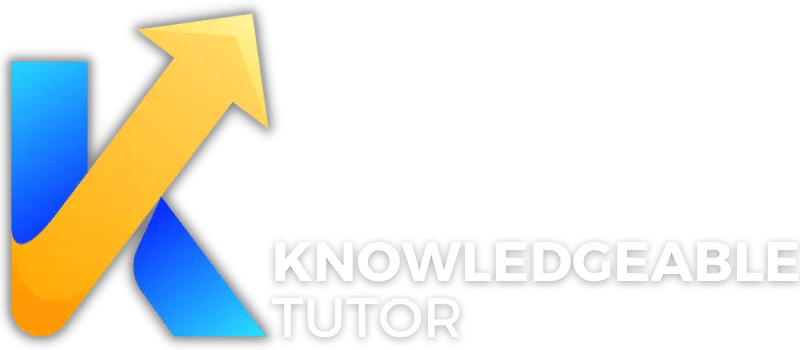Building a Personal Brand as an Online Tutor

Fanie Naude
CEO & Founder of Knowledgeable Tutor, Buznet Direct, YMC & Naude Consulting

Fanie Naude
CEO & Founder of Knowledgeable Tutor, Buznet Direct, YMC & Naude Consulting
In This Article
II. What is Personal Branding?
III. Why Personal Branding Matters for Online Tutors
V. Defining Your Unique Value Proposition
VI. Identifying Your Target Audience
VII. Crafting Your Personal Brand Statement
VIII. Visual Elements of Your Brand
IX. Building an Online Portfolio
X. Social Media Strategy for Personal Branding
XI. Content Marketing for Personal Branding
XII. Networking and Community Building
XIII. Monitoring and Updating Your Personal Brand
XV. Common Pitfalls and How to Avoid Them
XVI. Data-Backed Strategies for Personal Branding

I. Introduction
Welcome to the labyrinthine world of online tutoring, where the maze isn't just about teaching but also about standing out in a crowded marketplace. As the digital age unfolds, the traditional classroom is extending its boundaries to include virtual spaces. This shift isn't just a technological leap but also a conceptual one. Online tutors are not merely educators; they are brands. As Peter Drucker, the management guru, once said, "The best way to predict the future is to create it." By building a personal brand, you're not just foreseeing your future in online tutoring; you're actively shaping it.
The purpose of this article is to serve as your compass, guiding you through the intricate process of building a personal brand as an online tutor. We'll delve into the why's, the how's, and the what's, providing you with a comprehensive roadmap. Whether you're a novice looking to start your online tutoring journey or a seasoned tutor aiming to scale new heights, this guide is your one-stop solution.

II. What is Personal Branding?
Before we embark on this journey, let's first demystify what personal branding actually is. In essence, personal branding is the practice of marketing oneself and one's career as a brand. It's an ongoing process of establishing a prescribed image or impression in the mind of others. In the context of online tutoring, your personal brand is a blend of your educational expertise, teaching style, values, and the unique benefits that a student gains from being tutored by you.
The Components of Personal Branding
- Identity: Who you are and what you stand for. This includes your qualifications, skills, and values.
- Visibility: How you appear online. This encompasses your website, social media profiles, and any other platforms where students can find you.
- Credibility: The trust you build. This is often established through testimonials, reviews, and the quality of your tutoring sessions.
- Community: The network you build. This includes both your student community and your professional connections in the field of education.
The Relevance in Online Tutoring
In a saturated market, personal branding is not just an option; it's a necessity. According to a report by Grand View Research, the global online tutoring market size was valued at USD 4.81 billion in 2019 and is expected to grow at a compound annual growth rate (CAGR) of 16.1% from 2020 to 2027. These numbers indicate that while the opportunities are abundant, so is the competition.
Personal branding sets you apart. It helps students and parents understand why they should choose you over another tutor. It's your unique selling proposition, condensed into an easily digestible and relatable narrative. It's what makes a student click on your profile, what convinces a parent to trust you with their child's education, and what builds your reputation in the online tutoring community.
In the next sections, we'll explore how to craft this narrative strategically and authentically, ensuring that your personal brand resonates with your target audience and stands the test of time.

III. Why Personal Branding Matters for Online Tutors
Benefits and Long-Term Gains
"Your brand is what other people say about you when you're not in the room," Jeff Bezos, the founder of Amazon, once remarked. This statement holds especially true for online tutors. In a digital landscape where you're not physically present to make an impression, your personal brand does the talking for you. Let's delve into why building a personal brand is not just beneficial but crucial for online tutors.
Increased Visibility
In the digital age, the first interaction most students and parents will have with you is online. A strong personal brand ensures that you are easily discoverable on various platforms. This increased visibility is not just about quantity but quality. It ensures that you attract students who are a good fit for your teaching style and subject expertise. For more on this, check out our guide on how to find students for online tutoring.
Enhanced Credibility
A well-crafted personal brand adds layers of credibility to your online presence. It's like a digital portfolio that showcases your qualifications, achievements, and testimonials. This credibility is often the deciding factor for parents and students when choosing a tutor. For tips on building credibility, you may refer to our article on ethical practices in online tutoring.
Financial Benefits
A strong personal brand often translates into higher rates and more consistent bookings. According to a study by EdSurge, tutors with a strong online presence can charge up to 50% more than those without a brand. For a comprehensive guide on pricing your services, visit online tutoring rates: how to price your services.
Long-Term Career Growth
Your personal brand is an asset that grows with you throughout your career. It opens doors to opportunities beyond tutoring, such as consulting, course creation, and even speaking engagements. For advanced strategies on growing your online tutoring business, you can read growing your online tutoring business: advanced strategies.

IV. Self-Assessment: Where Do You Stand?
Before you start building your brand, it's crucial to take stock of where you currently stand. As Socrates wisely put it, "Know thyself." Self-assessment is the cornerstone of effective personal branding.
Tools and Techniques for Self-Assessment
- SWOT Analysis: This classic business tool is equally effective for personal branding. Assess your Strengths, Weaknesses, Opportunities, and Threats.
- Online Surveys: Use platforms like SurveyMonkey to gather feedback from current and past students. This will give you insights into what sets you apart.
- Competitive Analysis: Look at other tutors in your subject area. What are they doing well? Where do they lack? This will help you identify gaps that your personal brand can fill.
- Personal Branding Scorecards: There are online tools available that can give you a 'brand score' based on your current online presence.
Setting Benchmarks
Once you've assessed your current standing, the next step is to set achievable benchmarks. These could be in terms of the number of students you aim to reach, the revenue you aim to generate, or the level of authority you aim to achieve in your subject area. For more on setting and measuring these benchmarks, you can refer to how to measure your success as an online tutor.
By understanding the benefits and conducting a thorough self-assessment, you lay a strong foundation for your personal brand. This groundwork is essential for the steps that follow, ensuring that your brand is not just visible and credible, but also aligned with your long-term career goals.

V. Defining Your Unique Value Proposition
Exercises and Examples to Help Define Your UVP
As the famous marketing adage goes, "If you're talking to everyone, you're talking to no one." The same principle applies to your personal brand. Your Unique Value Proposition (UVP) is the cornerstone of your brand, the magnetic north that guides all your branding efforts. It's what sets you apart in a sea of online tutors.
Exercises to Define Your UVP
- Target Audience Mapping: Identify the specific demographic and psychographic characteristics of your ideal students. Are they high school students struggling with math? Or perhaps adults looking to learn a new language?
- Problem-Solution Exercise: List down the problems or challenges your target audience faces and how you can solve them. This will help you articulate your UVP in a way that resonates with them.
- The "So What?" Test: After drafting your UVP, ask yourself, "So what?" If your UVP doesn't answer this question convincingly, it's time to go back to the drawing board.
Examples of Effective UVPs
- "Master the Art of Calculus in 30 Days: Perfect for High School Seniors."
- "Learn Spanish Through Immersive Storytelling: Ideal for Busy Adults."
For more insights on crafting your UVP, you may find our article on marketing yourself as an online tutor useful.

VI. Identifying Your Target Audience
Tips on How to Pinpoint Your Ideal Students
Knowing your audience is half the battle won. As Sun Tzu stated in 'The Art of War,' "If you know the enemy and know yourself, you need not fear the result of a hundred battles." In the context of personal branding, your 'enemy' is the challenge of connecting with the right students.
Techniques for Identifying Your Target Audience
- Demographic Analysis: Consider age, educational level, and geographic location. Are you targeting local students, or are you open to tutoring students from around the world?
- Psychographic Profiling: Understand the motivations, challenges, and behavioral traits of your ideal students. Are they motivated by grades, or are they looking to acquire a new skill?
- Online Surveys and Polls: Use these to gather data directly from potential or current students. This will give you firsthand insights into what they are looking for in an online tutor.
Tools for Audience Research
- Google Analytics: To understand the demographics of visitors to your online portfolio or website.
- Social Media Insights: Platforms like Facebook and Instagram provide detailed analytics that can help you understand your audience better.
For a deeper dive into understanding different online tutoring platforms and how they can help you reach your target audience, you can read understanding different online tutoring platforms.
By defining your Unique Value Proposition and identifying your target audience, you create a laser-focused brand that speaks directly to the students who will benefit the most from your tutoring services. This not only enhances your brand's appeal but also makes your marketing efforts more efficient and effective.

VII. Crafting Your Personal Brand Statement
Step-by-Step Guide to Creating an Impactful Brand Statement
"Your personal brand is a promise to your clients… a promise of quality, consistency, competency, and reliability," says Jason Hartman. Your personal brand statement is the encapsulation of that promise. It's your elevator pitch, your mission, and your ethos, all rolled into a concise and compelling sentence or two.
Steps to Craft Your Personal Brand Statement
- Identify Core Values: What are the values that you hold dear? Is it integrity, innovation, or perhaps empathy? Your values should be the backbone of your brand statement.
- Highlight Your Unique Skills: What can you do that others can't? This could be a teaching method you've perfected or a unique way you engage with students.
- Speak to Your Audience: Use language that resonates with your target audience. If you're targeting high school students, your tone will be different than if you're targeting professionals seeking career advancement.
- Be Authentic: Authenticity breeds trust. Make sure your brand statement is a true reflection of who you are.
For more on crafting a compelling brand statement, you may find our guide on building your online tutoring business: tips and strategies beneficial.

VIII. Visual Elements of Your Brand
Importance of Logo, Color Scheme, and Other Visual Elements
As Paul Rand, a seminal figure in graphic design, once said, "Design is the silent ambassador of your brand." In a digital world where attention spans are shrinking, the visual elements of your brand can make or break the first impression.
Key Visual Elements to Consider
- Logo: Your logo is often the first thing people see. It should be simple, memorable, and reflective of your brand's ethos.
- Color Scheme: Colors evoke emotions. Blue might convey trust, while red could signify passion. Choose a color scheme that aligns with your brand's values.
- Typography: The fonts you use should be easy to read and consistent across all platforms.
- Imagery: Use high-quality images that align with your brand. Whether it's photos of your tutoring sessions or relevant infographics, make sure they are professionally done.
Tools for Creating Visual Elements
- Canva: A user-friendly design tool for non-designers.
- Adobe Illustrator: For more advanced design needs.
- Unsplash: A source for high-quality, free-to-use images.
For an in-depth look at the tools and technology that can aid in creating these visual elements, you might find our article on tools and technology for effective online tutoring useful.
By crafting a compelling personal brand statement and paying meticulous attention to the visual elements of your brand, you're not just creating a brand; you're creating a promise and an experience. These elements work in tandem to build a brand that not only stands out but also stands for something, thereby attracting the students who are most likely to benefit from your unique approach to tutoring.

IX. Building an Online Portfolio
Platforms and Best Practices for Showcasing Your Skills
"Your brand is what other people say about you when you're not in the room," Jeff Bezos once remarked. An online portfolio is your chance to control that narrative. It's a curated space where you can showcase your skills, credentials, and testimonials, thereby providing tangible proof of your expertise.
Best Practices for Building an Online Portfolio
- Content Curation: Choose the content that best represents your skills and experience. This could include lesson plans, video snippets of your teaching, or student testimonials.
- User Experience: Ensure that the portfolio is easy to navigate, with a clean layout and intuitive menus.
- Call to Action: Each section of your portfolio should guide the visitor toward a specific action, whether it's contacting you for a free consultation or downloading a free resource.
Recommended Platforms for Building an Online Portfolio
- WordPress: Highly customizable and great for those who have some technical skills.
- Wix: User-friendly and offers a variety of templates designed for portfolios.
- LinkedIn: Not a traditional portfolio site, but its 'Featured' section allows you to showcase various forms of content.
For more on this topic, you may find our guide on how to find students for online tutoring beneficial, as it covers the importance of a strong online presence.

X. Social Media Strategy for Personal Branding
How to Use Platforms Like LinkedIn, Twitter, and Instagram Effectively
As Gary Vaynerchuk aptly puts it, "Your number one job is to tell your story to the consumer wherever they are, and preferably at the moment they are deciding to make a purchase." Social media provides a unique opportunity to do just that, allowing you to engage with your audience in real-time.
Social Media Platforms and Their Uses
- LinkedIn: Ideal for professional networking and sharing long-form content that establishes your thought leadership in the field of online tutoring.
- Twitter: Great for sharing quick tips, industry news, and engaging with influencers and potential students.
- Instagram: Perfect for visual storytelling. Showcase your teaching methods, share student success stories, or even give a glimpse into your day-to-day life as a tutor.
Tips for Effective Social Media Strategy
- Consistency is Key: Maintain a consistent posting schedule and visual theme.
- Engage, Don't Broadcast: Social media is a two-way street. Make sure to engage with your audience by responding to comments and messages.
- Measure and Tweak: Use analytics to measure the effectiveness of your strategy and make necessary adjustments.
For a deeper understanding of how to market yourself effectively on social media, you may find our article on using social media for your online tutoring business to be a valuable resource.
By meticulously crafting an online portfolio and implementing a well-thought-out social media strategy, you're not just building a brand; you're building a community. This community will not only serve as a testament to your skills but also as a continuous source of referrals, thereby sustaining and growing your tutoring business.

XI. Content Marketing for Personal Branding
Types of Content to Produce and Platforms to Use
"Content is king," Bill Gates declared, and in the realm of personal branding, this couldn't be more accurate. Content marketing is not just about selling; it's about educating, engaging, and adding value to your audience's life.
Types of Content to Produce
- Educational Blogs: Share your expertise on subjects you tutor, breaking down complex topics into digestible pieces.
- Webinars: Host live sessions to discuss common challenges in learning and how to overcome them.
- E-books and Guides: Create comprehensive guides on effective learning strategies or subject-specific tips.
- Video Tutorials: Visual content is highly engaging; use it to demonstrate your teaching methods.
Platforms to Use
- Medium: Great for long-form articles and thought leadership pieces.
- YouTube: Ideal for video content, tutorials, and vlogs.
- Your Own Website: A blog section can serve as a repository for all your content.
For more insights on content creation, check out our guide on creating effective lesson plans for online tutoring.

XII. Networking and Community Building
Importance of Networking and How to Do It Effectively
As Reid Hoffman, the co-founder of LinkedIn, once said, "Your network is your net worth." Networking is not just about collecting contacts; it's about planting relations.
Importance of Networking
- Referrals: A strong network can be a source of new students.
- Collaboration: Networking can lead to partnerships that enhance your service offerings.
- Learning: Interacting with other tutors can provide new perspectives and teaching methods.
How to Network Effectively
- Attend Industry Events: Whether online or in-person, these events are great for making connections.
- Social Media: Use platforms like LinkedIn to connect with industry professionals.
- Community Involvement: Participate in online forums and groups related to education and tutoring.
For more on networking, our article on how to find students for online tutoring offers valuable tips.

XIII. Monitoring and Updating Your Personal Brand
Tools for Tracking Your Brand's Performance
"However beautiful the strategy, you should occasionally look at the results," Winston Churchill wisely noted. Monitoring is the compass that guides the ship of your personal brand through the vast ocean of the internet.
Tools for Monitoring Your Brand
- Google Analytics: Track website visits, user engagement, and other key metrics.
- Social Media Analytics: Platforms like LinkedIn and Twitter provide insights into post reach and engagement.
- Customer Feedback Tools: Use surveys or direct feedback to understand your brand's impact.
Updating Your Personal Brand
- Regular Audits: Periodically review your online content to ensure it aligns with your brand message.
- Adapt to Feedback: Make necessary adjustments based on customer and peer reviews.
- Stay Updated: The education sector is ever-evolving; make sure your brand evolves too.
For more on this, our guide on how to measure your success as an online tutor can provide you with actionable metrics.
By mastering content marketing, networking, and brand monitoring, you're not just building a brand; you're building a legacy. These elements are the building blocks that will elevate your online tutoring business from a mere service to a full-fledged educational institution.

XIV. Case Studies: Successful Personal Branding Examples
Real-Life Examples of Tutors Who Have Successfully Built Their Brand
To understand the power of personal branding, one must delve into real-world examples. These case studies serve as a testament to the transformative potential of a well-crafted personal brand in the realm of online tutoring.
Teachable's Compilation of Personal Branding: While not specific to online tutoring, this resource offers a comprehensive look at 10 compelling personal branding examples across various fields. The key takeaway for online tutors is the importance of a cohesive brand identity.
Personal Branding Tips from BlogBrandz: This article showcases 11 examples of personal branding, focusing on authors, coaches, and speakers. The emphasis here is on the creative aspects of personal branding, which online tutors can adapt to make their brand more engaging.
Webflow's Effective Personal Branding Examples: This article highlights the personal branding strategies of public figures like Bill Nye and Shaun White. It offers insights into how a strong personal brand can transcend industries, a lesson that online tutors can apply to expand their reach.
CareerFoundry on Personal Branding for Tech Careers: Although targeted at tech careers, the principles discussed in this article are universally applicable. It emphasizes the role of personal branding in career development, a concept that online tutors should integrate into their long-term strategies.
Medium Article on Building a Successful Personal Brand as a Tutor: This article is a goldmine for online tutors. It discusses the essentials of building a successful personal brand specifically tailored for tutors.
By examining these case studies, online tutors can glean actionable insights to elevate their own personal brands. The common thread across all these examples is the meticulous attention to detail, a unified visual and narrative identity, and the strategic use of various platforms for brand promotion.

XV. Common Pitfalls and How to Avoid Them
List of Common Mistakes and Solutions
"Success usually comes to those who are too busy to be looking for it." - Henry David Thoreau
In the journey of personal branding, pitfalls are inevitable. However, awareness and proactive measures can mitigate these challenges. Here are some common mistakes online tutors make in personal branding and how to avoid them:
Inconsistency Across Platforms: Ensure that your brand message, visuals, and tone are consistent across all platforms. Inconsistency can confuse your audience and dilute your brand's impact.
Ignoring Feedback: Constructive criticism is a goldmine for improvement. Ignoring feedback can lead to stagnation. Always be open to reviews and adapt accordingly.
Over-Promotion: While it's essential to showcase your skills and achievements, over-promotion can turn off potential students. Balance is key.
Neglecting Networking: Many tutors underestimate the power of networking. Building relationships within your industry can provide invaluable opportunities and insights.
Lack of Authenticity: Authenticity is the cornerstone of a strong personal brand. Pretending to be something you're not will eventually be exposed and can severely damage your brand.
Failure to Update: The digital landscape is ever-changing. Failing to update your brand and adapt to new trends can make you seem outdated.
Ignoring Data: In the age of analytics, ignoring data is a cardinal sin. Use analytics tools to track your brand's performance and make data-driven decisions.
By avoiding these pitfalls, you're not just sidestepping obstacles; you're paving a smoother road to success. For more comprehensive strategies on avoiding these pitfalls, you may refer to our guide on how to overcome the challenges of online tutoring.

XVI. Data-Backed Strategies for Personal Branding
Strategies Supported by Data and Research
"In God we trust; all others bring data." - W. Edwards Deming
In the digital age, data is the new oil. It fuels decisions, validates strategies, and provides a roadmap for success. For online tutors, incorporating data-backed strategies into their personal branding efforts can be a game-changer. Here are some data-driven approaches:
SEO Optimization: According to Backlinko, the top-ranking pages on Google have an average content length of 1,447 words. Long-form content not only ranks better but also provides value, enhancing your brand's credibility.
Social Media Engagement: A study by Sprout Social found that 57% of consumers will follow a brand to learn about new products or services. Consistent and valuable posting can increase engagement and brand awareness.
Video Content: According to a report by HubSpot, 54% of consumers want to see more video content from brands they support. Video tutorials can be a powerful tool for online tutors.
Personalized Email Campaigns: Campaign Monitor states that personalized email campaigns can drive a 760% increase in revenue. Tailored content can make your brand more relatable.
Feedback Loops: Utilizing customer feedback for improvement can lead to a 10-15% increase in customer satisfaction, according to Qualtrics.
Analytics and KPI Tracking: Tools like Google Analytics can provide insights into user behavior, helping you refine your branding strategies.
For a deeper dive into data-backed strategies, you may refer to our guide on growing your online tutoring business with advanced strategies.
Data-Backed Diagram
| Strategy | Key Data Point | Source |
|---|---|---|
| SEO Optimization | 1,447 average words for top-ranking pages | Backlinko |
| Social Media Engagement | 57% follow for new products/services | Sprout Social |
| Video Content | 54% consumers want more video | HubSpot |
| Personalized Emails | 760% increase in revenue | Campaign Monitor |
| Feedback Loops | 10-15% increase in customer satisfaction | Qualtrics |

XVII. Legal and Ethical Considerations
What to Be Aware of When Building Your Brand
"Ethics is knowing the difference between what you have a right to do and what is right to do." - Potter Stewart
Navigating the digital landscape requires not just strategic acumen but also ethical and legal awareness. Here are some considerations:
Copyright Laws: Ensure that all the materials you use, from images to articles, are either original or properly credited to avoid copyright infringement.
Data Privacy: With GDPR and other data protection laws, it's crucial to have a transparent privacy policy. Make sure you're compliant with these regulations.
Advertising Standards: If you're using paid promotions, be aware of the advertising standards in your jurisdiction. Misleading advertisements can lead to legal issues.
Client Confidentiality: As an online tutor, you may have access to sensitive information. Maintaining confidentiality is not just ethical but often legally required.
Inclusive Practices: Ensure that your branding and teaching practices are inclusive and do not discriminate based on race, gender, or other factors.
Transparency: Be transparent about any affiliations or sponsorships to maintain trust.
Professional Conduct: Maintain a high standard of professional conduct in all interactions, both online and offline.
For more on this topic, you may refer to our guide on ethical practices in online tutoring.
By adhering to these legal and ethical considerations, you're not just building a brand; you're building a brand that stands the test of integrity and law.

XVIII. FAQs: Navigating the Intricacies of Personal Branding as an Online Tutor
The labyrinth of personal branding can be daunting, but fret not. Here, we address some of the most frequently asked questions that often surface in Google's "People Also Ask" section. These questions are the collective curiosity of many like you, seeking to carve a niche in the realm of online tutoring.
Q1: What is Personal Branding and Why is it Important for Online Tutors?
Answer: Personal branding is the practice of marketing oneself and one's career as a brand. It's a continuous process of developing and maintaining a reputation and impression. For online tutors, personal branding is crucial for standing out in a saturated market, attracting the right students, and building a long-term career. It's not just about self-promotion; it's about establishing your identity, your promise to your students, and the unique benefits that one gains from choosing you as their tutor.
Q2: How Do I Start Building My Personal Brand?
Answer: The first step in building your personal brand is self-assessment. Understand your strengths, weaknesses, and unique value proposition. Next, identify your target audience—this could be students in a particular age group, or those seeking help in a specific subject. Once you have this information, you can start crafting your personal brand statement and visual elements like logos and color schemes. For a more detailed guide, you can refer to our comprehensive guide on building your personal brand.
Q3: What Are the Tools I Can Use for Personal Branding?
Answer: There are various tools available for different aspects of personal branding. For creating visual elements like logos, tools like Adobe Illustrator or Canva are useful. For social media management, platforms like Hootsuite or Buffer can be beneficial. For tracking your brand's performance, Google Analytics is a must-have.
Q4: How Do I Maintain My Personal Brand?
Answer: Maintaining your personal brand involves regular updates to your online portfolio, consistent engagement on social media, and continuous learning and improvement. You should also monitor how your brand is performing using analytics tools and make adjustments as needed.
Q5: Are There Any Legal Considerations I Should Be Aware Of?
Answer: Yes, when building your personal brand, it's essential to be aware of copyright laws, especially when using images or content that are not your own. Always give credit where it's due and make sure to get permissions for any copyrighted material you wish to use.
These questions are just the tip of the iceberg. For a more in-depth understanding, you may want to explore our FAQ section on online tutoring.

Conclusion
The journey of building a personal brand as an online tutor is akin to crafting a masterpiece; it requires meticulous attention to detail, a deep understanding of your audience, and a relentless pursuit of excellence. As we've navigated through the various facets of personal branding—from self-assessment to legal considerations—we've unearthed the critical elements that contribute to a robust and impactful brand. Remember, your brand is not just a logo or a catchy tagline; it's an embodiment of your values, your promise to your students, and the unique experience you offer. As Jeff Bezos aptly said, "Your brand is what other people say about you when you're not in the room."
In this digital age, where the competition is just a click away, having a strong personal brand is not just an option but a necessity. It's an investment that pays exponential dividends in the form of student trust, higher engagement, and long-term loyalty. So, as you step into the world of online tutoring, arm yourself with the tools and strategies discussed in this comprehensive guide. Your brand is your legacy; make it remarkable.

